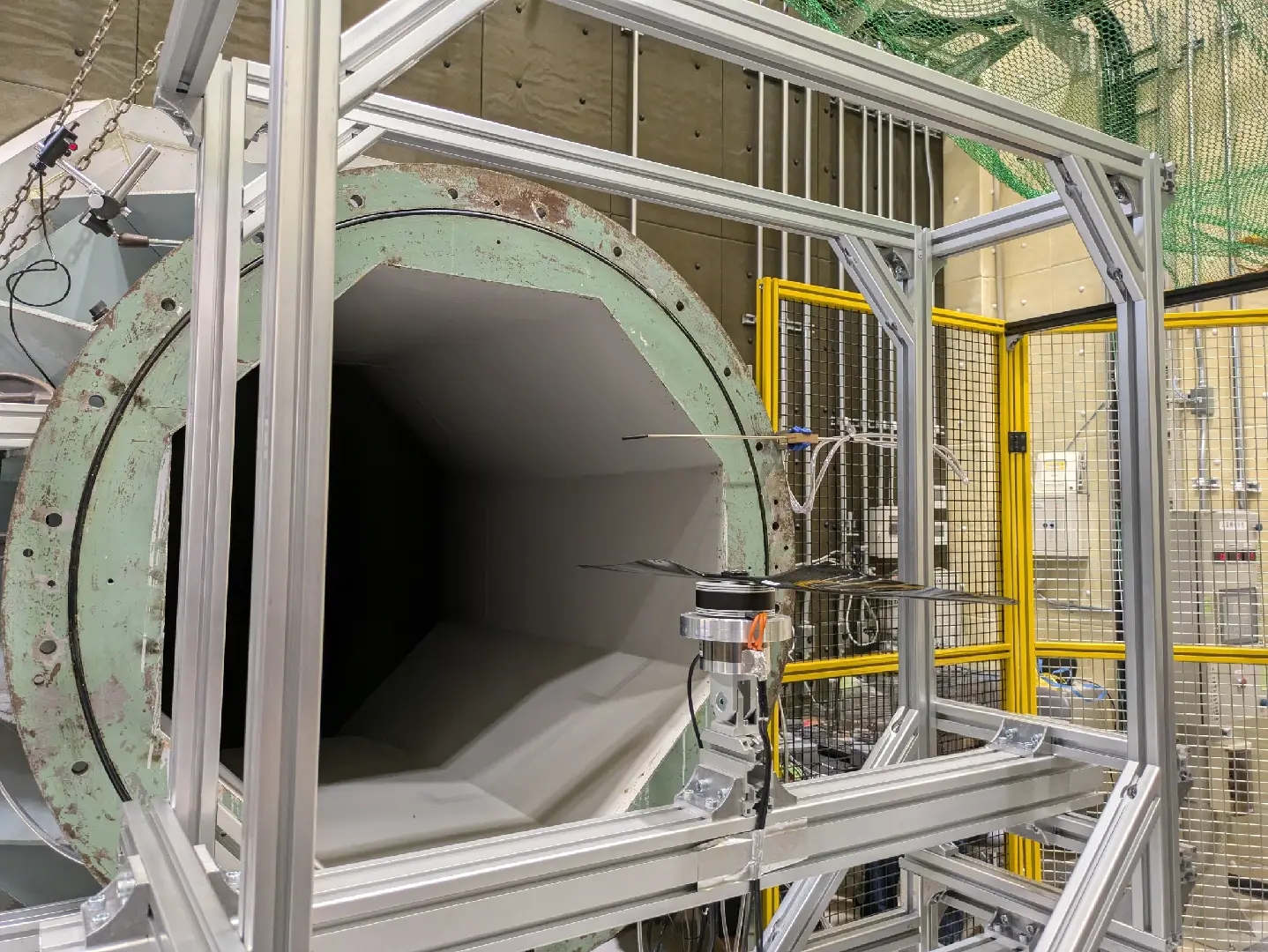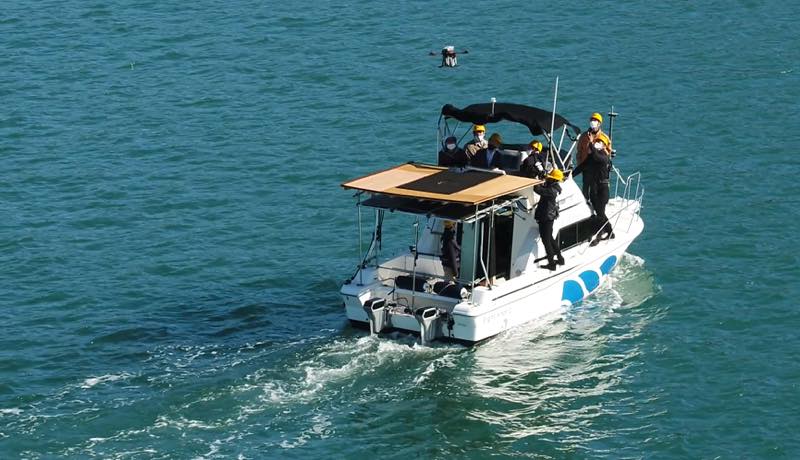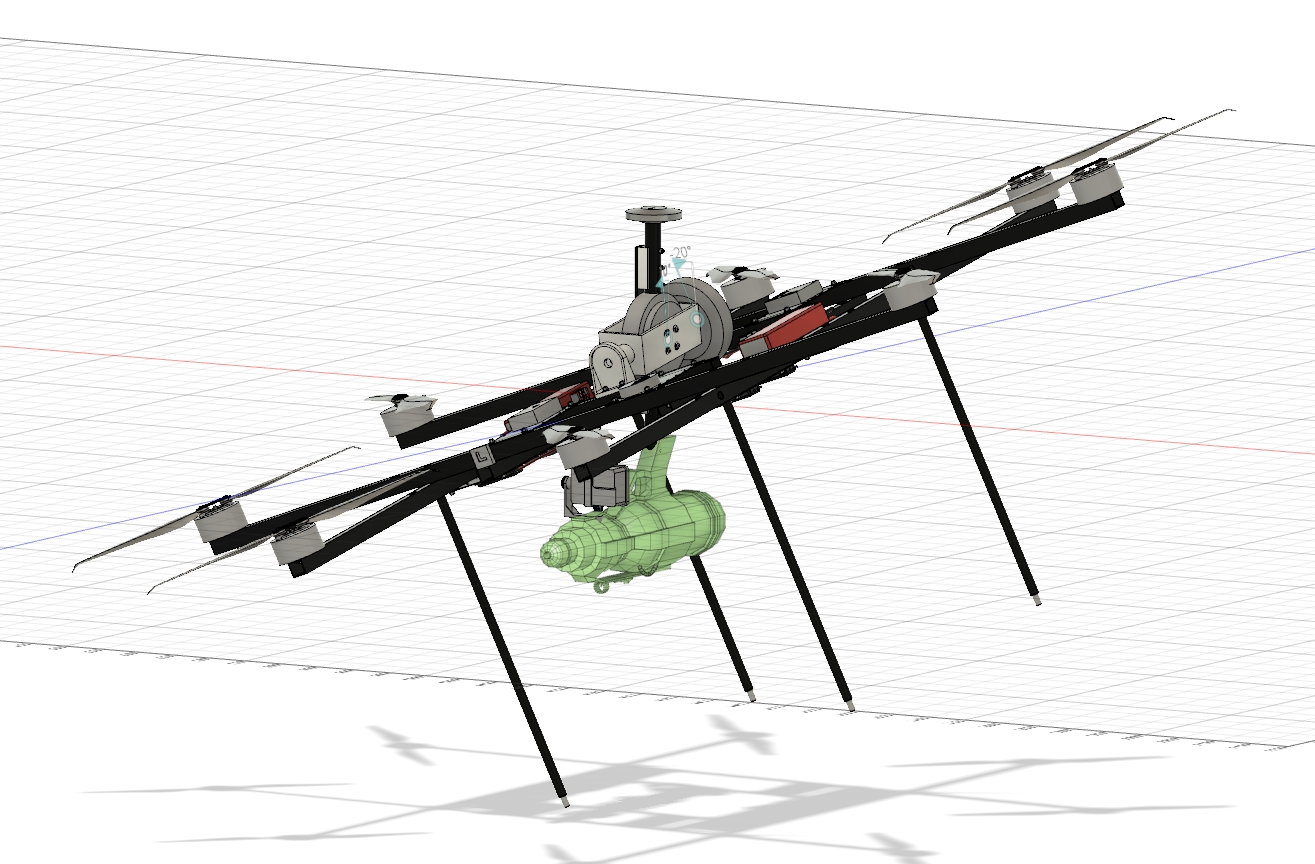

Achievements/case studies
【R&D】Tohoku University Propeller Wind Tunnel Test

1. Background
Aeronext conducted basic research to investigate the aerodynamic characteristics of propellers with the aim of developing next-generation drone technology. In order to maximize the efficient flight performance of drones, it is essential to conduct detailed analysis of the aerodynamic characteristics of propellers, such as thrust, air resistance and moment. In order to address technical issues, Aeronext conducted wind tunnel experiments using a low-turbulence wind tunnel with minimal turbulence in the air flow, in collaboration with the Institute of Fluid Science at Tohoku University. The low-turbulence wind tunnel at the Institute of Fluid Science, Tohoku University, is used for research in industry and academia because it has extremely low flow turbulence and enables highly accurate aerodynamic measurements.
2. Purpose
The aim of this experiment is to quantitatively evaluate the aerodynamic characteristics of propellers under various conditions. With the aim of optimizing drone design, Aeronext is investigating how factors such as thrust, air resistance, and moment change when the wind speed, inflow angle, and propeller rotation speed are changed in regard to various combinations of propellers with different shapes and motors all with different characteristics. This basic research provides the data necessary for designing more efficient drones and supports future technological innovation.
3. Overview
From October 7th to 11th, we conducted wind tunnel experiments on propellers using the low-turbulence wind tunnel at the Institute of Fluid Science, Tohoku University. In the experiments, we measured not only the thrust of the propellers, but also the air resistance and moment in detail.
We evaluated the performance of the propeller under different conditions by changing the wind speed, propeller angle, and propeller rotation speed.
4. Low-Turbulence Wind Tunnel Specifications
The Low-Turbulence Wind Tunnel at the Institute of Fluid Science, Tohoku University, is a facility for basic and applied research related to fluids. This wind tunnel is designed to have low turbulence, low noise, and extremely uniform airflow. This extremely stable airflow boasts world-class performance, and it contributes greatly to precise fluid experiments, such as research on the transition from laminar flow to turbulent flow and product development in industry.
・Maximum wind speed: 70m/s
・Diagonal dimension of measurement chamber: 1m
・Air flow turbulence: 0.02% or less
5. Conclusions and Future Outlook
The data obtained from this wind tunnel experiment will play a major role in Aeronext’s research and development of drones. In particular, it will be used as baseline data to make the design of the entire aircraft more efficient and precise, and will contribute to improving the performance of next-generation drones, as well as the realization of new technologies. As a result, Aeronext’s cutting-edge drone technology is expected to evolve even further and be used in a variety of industrial fields.
Going forward, we will evaluate the effects of various factors such as propeller shape and motor type.
*For more information about Tohoku University’s wind tunnel testing facility, please click here.


